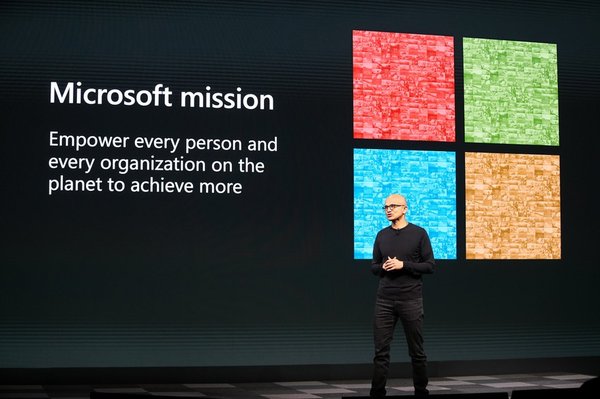Sustainable investing, or ESG investing, is more than a trend; it is the future. ESG investment portfolios incorporate traditional investment principles, such as diversification and investing for the long term, with selections of companies that meet each individual investor’s ESG priorities.
An ESG portfolio takes into account the inherent risks that companies can face from issues such as water scarcity, poor data security, or climate-related production declines. This makes ESG priorities a powerful resource to find companies with the greatest potential for long-term resilience.
According to a 2021 Morgan Stanley’s report, ESG investments consistently outperformed their traditional counterparts between 2004 and 2020. Morningstar found the number of ESG funds grew to 534, an increase of 194 between 2019 and 2021. The track record of sustainable investing is now strong enough that even some of the most skeptical traditional investors are paying attention.
However, building an ESG portfolio still takes a bit of research. Among greenwashing, a lack of transparent ESG reporting, and no clear definition of ESG priorities, many investors are left wondering what qualifies as ESG. The good news is that with consumer and investor demand, companies are taking sustainable priorities seriously.
It is also easier than ever to build an ESG portfolio that balances returns with positive impact. ESG rating frameworks such as Sustainalytics and MSCI USA provide unbiased information to help guide investment decisions for personalized ESG portfolio criteria. Investors can check a company’s performance on environmental, social, and governance issues to assess overall risk.
ESG Rating
Elements of an ESG portfolio
Elements of an ESG portfolio
Investors building an ESG portfolio will generally engage in one of two tactics: an exclusionary principle or screening. With the exclusionary principle -- popular with early ESG funds -- entire sectors or markets are excluded. Commonly excluded companies include weapons manufacturers and producers of fossil fuels, tobacco, alcohol, or adult entertainment.
Screening allows investors to take a more detailed approach. The nuanced information gathered through ESG ratings and other screening tools allows investors to look at a company as a whole. Rating systems help investors screen individual companies across a profile of environmental, social, and governance risk factors.
With the exclusionary principle, it’s possible for investors who limited fossil fuels to still be heavily invested in companies with significant transportation fossil fuel usage. With screening, investors are able to select companies whose mission and operations more closely align with their ESG priorities and investment goals.
ESG defined
ESG defined
Environmental, social, and governance (ESG) priorities can predict a company’s long-term risks. A company with poor governance can face security breaches, employee strikes, lawsuits, or other problems stemming from poor management practices. A company that relies heavily on natural resources that could be depleted through climate change faces future risk of supply chain and production issues.
Here are the most common ESG priorities:
Environmental
- Carbon emissions
- Energy efficiency
- Water scarcity
- Pollution and emissions
- Waste management
Social
- Labor standards (fair wages, no child labor, etc.)
- Supply chain management
- Workplace diversity
- Product safety and usefulness
- Community impact (giving back)
Governance
- CEO and executive compensation
- Board diversity
- Board structure and transparency
- Political contributions, lobbying, and corruption oversight
- Data security and customer privacy
Companies that perform well on ESG factors generally present lower risks. For example, a company with strong supply chain management presents a lower risk than one with supply chain vulnerabilities. Likewise, a company with data security risks presents greater overall risks in an era of increasing online security threats.
Four steps to building an ESG portfolio
Four steps to building an ESG portfolio
There is no one-size-fits-all approach to an ESG portfolio because each investor’s priorities differ. However, in four simple steps, you can be well on your way to starting or expanding an ESG portfolio and a personalized ESG investing strategy.
Step 1: Set priorities
If your money can do good, what do you want it to do? Ask yourself what issues are important to you. One investor may want to focus on climate change, while another prioritizes women’s rights, racial injustice, or another social issue.
Sustainable investment advisors often suggest that each person makes their list of top priorities. This can be revealing for couples, who may find they don’t share the same ESG priorities. But there is room for compromise when each chooses one to four core issues as the foundation of an ESG portfolio.
Priorities can always change over time. Setting an ESG mission statement can help investors to select investments and companies that prioritize the future they want to see.
Common ESG priority sets:
- Broad ESG, with a blend of ESG priorities, strong social screening, shareholder advocacy, and community investments.
- Carbon reduction, or excluding companies exploiting fossil fuels while prioritizing carbon-neutral companies.
- Faith-based screening and interpretation of social justice and environmental stewardship.
- Impact priorities, with more stringent screening and active advocacy programs.
- Exclusionary priorities that avoid nuclear power, gambling, tobacco, genocide, or entire market sectors.
- Community-based investment priorities that emphasize companies building up local communities.
Step 2: Choose an approach
Now the question becomes how to implement your investment priorities. Do you shun all fossil fuels and also companies that rely heavily on fossil fuels, such as shipping companies? Most investors will choose a combination of exclusionary and screening approaches.
Exclusions are relatively straightforward. Investors choose to avoid all stocks or funds that produce or hold companies in one or more controversial industries. The most common exclusions are:
- Controversial weapons
- Civilian firearms
- Nuclear power
- Fossil fuels
- Tobacco
- Cannabis
- Conventional military weapons
- Alcohol
- Gambling
- Adult entertainment
- Oil sands
- Thermal coal
- UN Global Compact violators
Screening is more complicated. Very few companies are considered entirely good or bad. Instead, they are rated on the relative ESG risks through a comprehensive screening. MSCI USA and Sustainalytics are the current leaders in ESG ratings.
Sustainalytics covers more than 13,000 companies across global indexes. MSCI covers more than 8,500 companies and more than 680,000 equity and fixed income securities globally. Each one has a slightly different scoring method.
With MCSI, each company receives a rating of industry-specific risk weighted for potential impact. Companies are scored on a scale of 0.0 to 10.0, converted to a grade of CCC to AAA. Leading companies in each industry have an ESG score of AA or AAA. Companies with strong performance in one area, such as governance, but low environmentally protective or socially responsible priorities generally score in the range of BB or BBB.
Investors can look up the ratings of ESG stocks, bonds, or funds in Sustainalytics’ or MSCI’s databases.
Step 3: Make an investment plan
Investors can choose to gradually add ESG stocks, bonds, and funds to their existing portfolio, or invest in ESG options moving forward. One approach is to invest 401(k) or employer-matched funds in ESG stocks while gradually shifting existing funds to ESG options.
The basics of a strong investment plan remain the same:
- Diversify your portfolio.
- Use dollar-cost averaging, especially in the volatile markets we’re seeing.
- Buy and hold.
- Plan to invest for the long term.
The only additional investment objectives for a sustainable portfolio are how much of the portfolio will meet ESG standards and how soon it will be shifted to ESG. This plan will vary based on each investor’s total assets invested, risk tolerance, and ESG investment goals. Even a 5% shift of total invested assets into ESG can be a good initial goal.
Step 4: Screen ESG funds
Once there is a plan in place, the final step is to choose the specific ESG funds, stocks, and bonds for investment. ESG ETFs and ESG mutual funds are a relatively low-risk way for most investors to get into ESG investing. The funds offer diverse positions, and many have excellent performance records.
Funds put out their prospectus and top 10 positions. Investors who want to dig deeper can ask for a list of all fund positions, an exercise that often reveals the fund’s priorities and ESG commitment.
However, for most investors getting into ESG investing, large funds such as Nuveen ESG Mid-Cap Growth ETF (NUMG 0.51%), iShares ESG Aware MSCI EAFE ETF (ESGD 0.4%), and Vanguard ESG U.S. Stock ETF (ESGV 0.11%) can be a good starting point.
Related Investing Topics
Further steps for build an ESG portfolio
Further steps for build an ESG portfolio
Sustainable investing has shown enormous growth in the past 10 years, and it's reasonable to expect greater growth in the next decade. An ESG portfolio is a way to step into the sustainability arena and build long-term wealth while benefiting from the resilience in ESG investments.
Sustainable investing and building an ESG portfolio are not overnight decisions. They are about shifting overall investment priorities and goals to look at ESG within a company’s total performance and overall investment objectives. ESG investors can -- and should -- continue to research, build, and adjust their portfolios with the basics of investing in mind. With the steps here, investors have the tools to build an ESG portfolio that reflects their goals, both financially and for the future of the world.



















